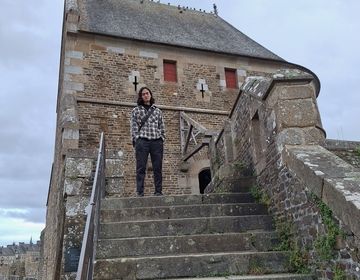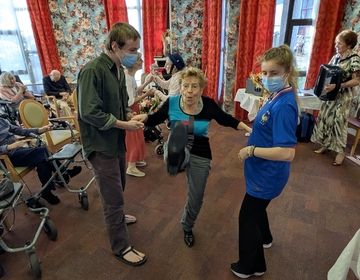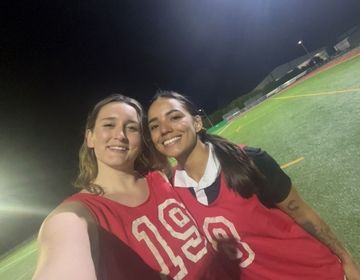Macarons and Mindfulness
When studying abroad, it is important to learn about the local culture, and one of the many facets of a culture is its cuisine. In France especially, people take great pride in their cooking. Meals are highly valued as time to be spent together and are often shared with family and close personal friends. Thus, sharing food represents care and community, and the skill of cooking is important for many French people as a result. As an American exchange student, the cultural significance that the French place on food and cooking has been an important adjustment to make for my stay in Rennes, and baking macarons with my CIEE group was a formative learning experience for this cultural aspect.
During our second week in Rennes, the CIEE group took part in a macaron baking workshop together. In the United States, I had been told that macarons are difficult to bake, so I had initially expected the workshop to be a long and complex process, mostly individual, where we would each get a few macarons at the end. However, the workshop began with our group being divided into pairs of students who would work together, then each pair being assigned a flavor of macaron: red berry, lemon, pistachio, chocolate, and salted butter caramel (a Breton specialty). My partner and I were assigned lemon macarons, although I was excited to try all five flavors.
Dividing the work among groups of students responsible for specific tasks made us much more efficient, and we were quickly able to finish the macaron batter, made from a mixture of egg whites, sugar, almond powder, and a bit of food coloring. I was pleasantly surprised that in total, we made six trays of cookies: one for each flavor, then one tray with any leftover batter. While waiting for the macarons to dry so they could be heated in the oven, we began to work on the fillings, still checking back occasionally to move dried macarons into the oven. Different fillings took different amounts of time to prepare, especially since some needed to be chilled, so instead of each group being assigned a specific filling, tasks were assigned as needed to students who weren’t busy. I helped with the chocolate filling, then the pistachio filling as the chocolate was being chilled. Once the fillings and macaron cookie halves were finished, we began to pair the now-baked macarons together and garnish them with their respective fillings. Some students even experimented with mixing different flavors, such as by putting the pistachio and chocolate fillings together. We were each able to take home a box of around ten macarons, which was a wonderful reward for our hard work.
As interesting as it was to learn about the process of making macarons (and to eat the macarons later—they were very good), this class was also interesting because it helped me to better understand the French attitude around cooking and community. If tasks can be done more efficiently together, then everybody benefits. Similarly, if I was given a task during the workshop but noticed that it had been a while since another student had been able to participate, I would ask them if they were interested first so everyone could have the opportunity to be engaged. Thinking in this way is helpful because it gives everyone a chance to participate to a degree to which they’re comfortable and to play to their strengths. After all, that’s what community is about—a shared experience between people learning from and interacting with each other.
Holly BRAGDON
Furman University
CIEE-Rennes Liberal Arts Fall 2023
Related Posts

At Home In France
When I came to Rennes for my study abroad, I thought my biggest lessons would come from my university classes—grammar, vocabulary, literature, all that. But honestly, some of the most... keep reading

Volunteering in Rennes
“You better hurry up, or we are going to get a timer.” A word to the wise: if you are wanting to volunteer at a retirement home in France, make... keep reading

Rugby in Rennes: Playing a Sport Abroad
As I was considering applying for my study abroad program in Rennes, one of my biggest concerns was whether I would fall behind in my sport while I was away... keep reading
